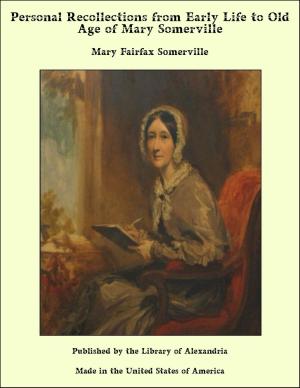The Story of the Upper Canada Rebellion
Nonfiction, Religion & Spirituality, New Age, History, Fiction & Literature| Author: | John Charles Dent | ISBN: | 9781465534644 |
| Publisher: | Library of Alexandria | Publication: | March 8, 2015 |
| Imprint: | Language: | English |
| Author: | John Charles Dent |
| ISBN: | 9781465534644 |
| Publisher: | Library of Alexandria |
| Publication: | March 8, 2015 |
| Imprint: | |
| Language: | English |
THE BANISHED BRITON. Top 1819 letteri stranger, had any such been present, could not have failed to perceive that the trial was one in which a keen interest was felt by the spectators, many of whom were restless and irritable, insomuch that they found it impossible to keep perfectly still, and from time to time shifted uneasily in their places. Whispers, "not loud, but deep," occasionally reverberated from the back benches to the quadrangular space in front assigned to gentlemen of the long robe, and ascended thence to the august presence upon the judgment seat. Ever and anon the stentorian voice of the crier proclaimed silence, in a tone which plainly signified that endurance had well-nigh reached its limits, and that he would really be compelled to proceed to extremities if his mandate were any longer disobeyed. The court-room was of the old conventional pattern. At the upper end was the large elevated desk, or throne, extending nearly half way across the chamber, with spacious cushioned chairs, and Other suitable accommodation for the presiding judge and his associates. To right and left were the enclosed jury boxes, with seats raised considerably above the level of the floor, but not so high as those provided for the justices. Directly opposite the throne of justice, and about six yards distant therefrom, was the prisoners' dock, into which five or six persons might have been thrust, at a pinch. The intervening space enclosed by this quadrangle—throne, prisoners' dock, and jury boxes—was mainly appropriated to the use of barristers and attorneys, and their clients. A large portion of the space so appropriated was occupied by a table, around which were distributed a few chairs, every one of which was occupied; and at the end directly below the judicial throne was a small enclosure provided for the clerk of the court, set apart by a low railing, and containing a desk of diminutive size. Between the clerk's desk and the left-hand jury box was the witness stall, raised to a level with the highest seats provided for the jurors. A seat for the sheriff was placed a short distance to the right of the throne of justice, and on a slightly lower level. All these arrangements occupied perhaps one-third of the entire court-room. The rest of the space, extending from the rear of the prisoners' dock to the lower end of the chamber, was occupied by seats rising tier behind tier, with a passage down the middle. Between each of the ends of these seats and the walls of the chamber were passages of about three feet in width, leading to the doors, for purposes of "ingress, egress and regress." Such was the plan of the conventional Upper Canadian court-room in the olden time; and such, with a few inconsiderable modifications, many of them remain down to the present day
THE BANISHED BRITON. Top 1819 letteri stranger, had any such been present, could not have failed to perceive that the trial was one in which a keen interest was felt by the spectators, many of whom were restless and irritable, insomuch that they found it impossible to keep perfectly still, and from time to time shifted uneasily in their places. Whispers, "not loud, but deep," occasionally reverberated from the back benches to the quadrangular space in front assigned to gentlemen of the long robe, and ascended thence to the august presence upon the judgment seat. Ever and anon the stentorian voice of the crier proclaimed silence, in a tone which plainly signified that endurance had well-nigh reached its limits, and that he would really be compelled to proceed to extremities if his mandate were any longer disobeyed. The court-room was of the old conventional pattern. At the upper end was the large elevated desk, or throne, extending nearly half way across the chamber, with spacious cushioned chairs, and Other suitable accommodation for the presiding judge and his associates. To right and left were the enclosed jury boxes, with seats raised considerably above the level of the floor, but not so high as those provided for the justices. Directly opposite the throne of justice, and about six yards distant therefrom, was the prisoners' dock, into which five or six persons might have been thrust, at a pinch. The intervening space enclosed by this quadrangle—throne, prisoners' dock, and jury boxes—was mainly appropriated to the use of barristers and attorneys, and their clients. A large portion of the space so appropriated was occupied by a table, around which were distributed a few chairs, every one of which was occupied; and at the end directly below the judicial throne was a small enclosure provided for the clerk of the court, set apart by a low railing, and containing a desk of diminutive size. Between the clerk's desk and the left-hand jury box was the witness stall, raised to a level with the highest seats provided for the jurors. A seat for the sheriff was placed a short distance to the right of the throne of justice, and on a slightly lower level. All these arrangements occupied perhaps one-third of the entire court-room. The rest of the space, extending from the rear of the prisoners' dock to the lower end of the chamber, was occupied by seats rising tier behind tier, with a passage down the middle. Between each of the ends of these seats and the walls of the chamber were passages of about three feet in width, leading to the doors, for purposes of "ingress, egress and regress." Such was the plan of the conventional Upper Canadian court-room in the olden time; and such, with a few inconsiderable modifications, many of them remain down to the present day















